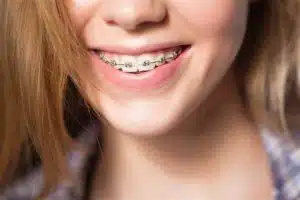
Getting braces is a big step, and for most people, it comes with a lot of questions. One of the first things people ask is, “Which kind should I get?” That’s a fair question—because there are several different types of dental braces, and not all of them work the same way.
Some are more noticeable. Others are clear or hidden. Some work faster, and some are easier to keep clean. Choosing the right one really depends on your teeth, your comfort, and what you want out of treatment.
In Charlotte, NC, there are plenty of orthodontists who offer all kinds of options. That means you don’t have to settle or feel stuck—you can actually find a braces type that works for your life and your smile goals.
This guide breaks it all down, simply. So if you’re thinking about braces, keep reading. You might find the option that fits just right.
What Dental Braces Do
Dental braces are tools that help move teeth into better positions. They work slowly over time to fix the way teeth line up. Braces can straighten crooked teeth, close gaps, fix crowding, and improve how your bite fits together.
Most braces use small brackets attached to the teeth and a wire that gently pulls them into place. Others, like clear aligners, use plastic trays instead of brackets and wires. No matter the type, the goal is the same: to make your teeth work and look better.
People get braces for different reasons. Some have an overbite, where the top teeth stick out too far. Others may have an underbite or teeth that are crowded or too far apart. These issues can make it hard to chew, speak, or clean your teeth properly.
Braces help solve these problems—making your smile healthier and more balanced over time.
Different Types of Dental Braces and What to Know About Each One
Picking the right braces can feel like a lot. But once you know what each type offers, it gets easier to figure out what might fit your situation. Let’s go over the different types of dental braces so you can see what sets each one apart.
Traditional Metal Braces
These are the braces most people think of first. Traditional metal braces use small silver brackets that are glued to the front of your teeth. A wire connects them, and your orthodontist adjusts the wire during visits to slowly move your teeth into place.
Why people choose them: They’re strong and work well for all kinds of issues—even serious ones. Metal braces are often the fastest way to get results if your teeth need a lot of movement. They’re also one of the most affordable types.
What to keep in mind: They’re the most noticeable option. Some people may feel self-conscious wearing them, and they can cause mild soreness after adjustments.
Who they’re best for: Kids and teens often get these, especially if they need a lot of correction. They’re tough, get the job done, and have been used successfully for decades.
Ceramic Braces
Ceramic braces work like metal ones, but the brackets are made from clear or tooth-colored material. This helps them blend in with your teeth, so they’re less noticeable when you smile or talk.
Why people choose them: They offer the power of traditional braces, but they’re less visible. If you’re worried about how your braces will look in pictures or at work, ceramic might feel like a better fit.
What to keep in mind: Ceramic braces are more delicate than metal ones. If you eat a lot of hard or crunchy foods, they may chip or crack. Also, the clear material can stain if you don’t brush regularly—especially from things like coffee or dark sauces.
Who they’re best for: Older teens or adults who care about appearance but still want the reliability of bracket-style braces.
Lingual Braces
Lingual braces are placed behind your teeth, instead of on the front. From the outside, no one can see them—but they still use wires and brackets to move your teeth just like regular braces do.
Why people choose them: They’re completely hidden when you talk or smile. If being discreet is important to you, lingual braces are worth thinking about.
What to keep in mind: These can be harder to get used to. They sit close to your tongue, so they might affect your speech at first. They’re also harder to clean and usually cost more than other types.
Who they’re best for: Adults who want to fix their teeth without it being obvious. Lingual braces are also good if you don’t want to deal with taking aligners in and out.
Self-Ligating Braces
Self-ligating braces look a lot like metal or ceramic braces, but with one small difference—they don’t use rubber bands to hold the wire in place. Instead, they use a built-in clip that holds and adjusts the wire.
Why people choose them: These braces can speed up appointments since there are fewer parts to manage. They also tend to collect less food and plaque, so they’re a little easier to keep clean.
What to keep in mind: They still show, just like regular braces. Also, they might cost a little more, depending on the provider.
Who they’re best for: Anyone who wants to spend less time in the chair at each visit. Self-ligating braces are good for people who want treatment that’s efficient and easier to maintain day-to-day.
Clear Aligners (Like Invisalign)
Clear aligners are plastic trays that fit over your teeth. You wear a new set every couple of weeks to slowly shift your teeth. They’re smooth, thin, and see-through, so most people won’t notice you’re wearing them.
Why people choose them: They’re easy to remove for meals and brushing. There are no wires or brackets, which means no irritation inside your mouth. They also tend to be very low-key in public or at work.
What to keep in mind: You have to wear them for about 20 to 22 hours a day to see results. If you take them out too often or forget to put them back in, your progress can slow down. Also, they might not work for very complex cases.
Who they’re best for: Adults and teens with mild or moderate alignment issues who are committed to wearing them as directed.
Things to Think About Before Picking Braces
Choosing from the different types of dental braces isn’t just about what looks good. There are a few key things that can help you figure out which one fits your needs best, such as comfort, treatment goals, and the possibility of braces causing ulcers.
- How much does appearance matter to you?
Some braces are easy to see, like metal ones. Others, like ceramic or clear aligners, are less noticeable. If you care about how your smile looks during treatment—especially at work or in photos—that could help narrow it down. - How much fixing do your teeth need?
If your case is more serious, you may need stronger braces that can handle bigger changes. Your orthodontist can tell you if clear aligners are enough or if you’ll need something like metal or self-ligating braces. - How does your lifestyle play into it?
Play sports? Eat a lot of crunchy foods? Forget to brush sometimes? Some braces hold up better or are easier to manage day-to-day. For example, clear aligners need to be worn most of the day and taken out when eating—so they require more effort. - What’s your budget like?
Prices vary. Metal braces usually cost less, while lingual braces and clear aligners can be more expensive. Insurance may help cover part of the cost, but not always. - What does your orthodontist say?
Their advice matters most. They’ve seen what works and can help match your situation to the right kind of braces.
Orthodontic Care You Can Count on in Charlotte, NC
If you’re thinking about braces and you live in Charlotte, you’re in a good place. The city has many experienced providers, and finding an orthodontist in Charlotte, NC who offers everything from traditional metal braces to clear aligners is simple. With so many options, you won’t have trouble finding expert care for your smile.
A lot of local clinics use newer technology, which helps make treatment smoother and more accurate. Things like 3D scans, digital impressions, and faster adjustment tools are now common. That means fewer surprises—and better results.
People in Charlotte also have great things to say about their orthodontic care. If you check out reviews, you’ll see a lot of happy patients talking about how friendly and helpful their orthodontists are. Many say they felt comfortable and informed from start to finish.
So if you’re near Charlotte, you have access to quality care, updated tools, and a strong track record of happy smiles.
Final Thoughts: Choosing the Right Braces Starts with a Good Plan
There are several different types of dental braces, and each one has its own pros and cons. Metal braces are strong and reliable. Ceramic braces blend in with your teeth. Lingual braces are hidden behind the teeth. Self-ligating braces may need fewer visits. Clear aligners are nearly invisible and easy to take out.
What’s right for one person might not be the best for someone else. It really depends on your needs, how much fixing your teeth require, what you’re comfortable with, and what fits your budget.
If you’re in Charlotte, you have access to skilled orthodontists who can walk you through your options and help you figure out what makes the most sense for you. A quick consultation can make a big difference—and set you on the right path toward a healthier, straighter smile.
Don’t wait too long. Getting started is easier than you think.
Take the First Step Toward a Straighter Smile
Still unsure which braces are right for you? That’s exactly what we’re here for. At Webb & Goldsmith Orthodontics, we take the time to understand your goals, explain your options, and recommend what will work best for your smile and your lifestyle.
Booking an appointment is quick, and there’s no pressure—just real advice from a team that cares about getting it right.
Use our Contact Us page to send a message or give us a call. Let’s get you one step closer to the smile you’ve been thinking about.






